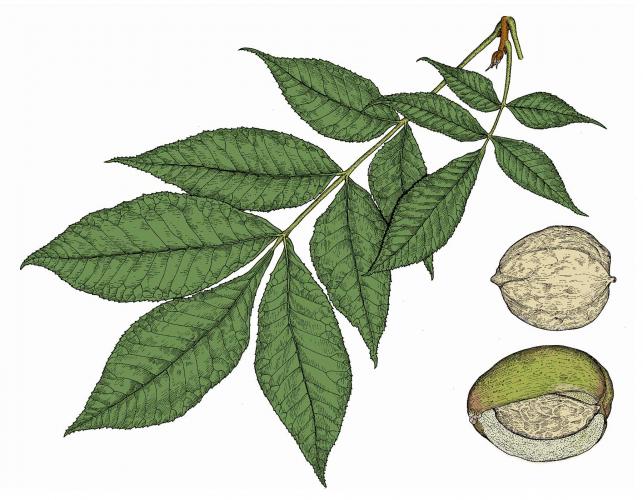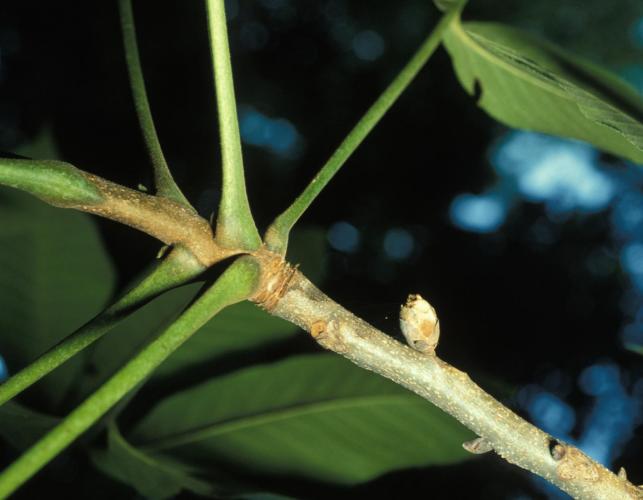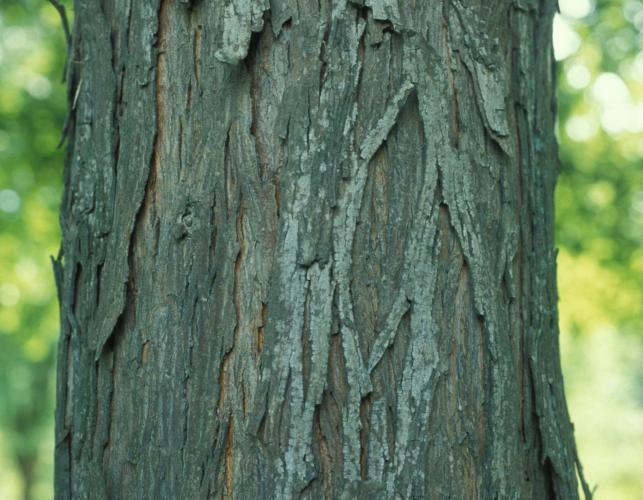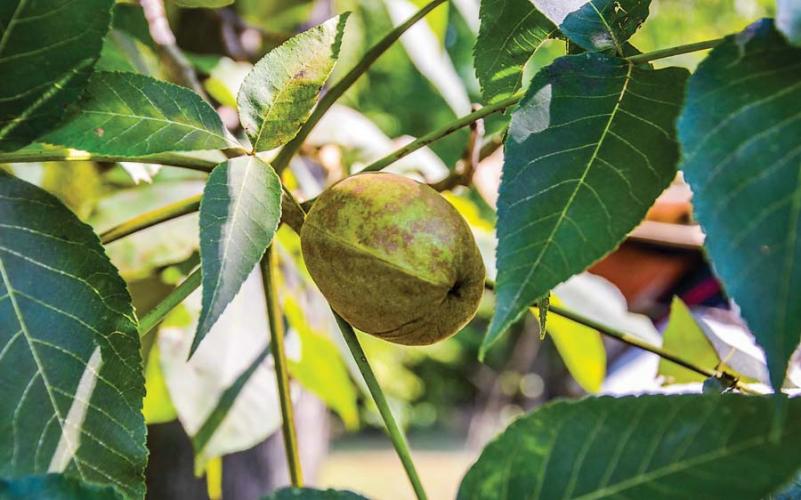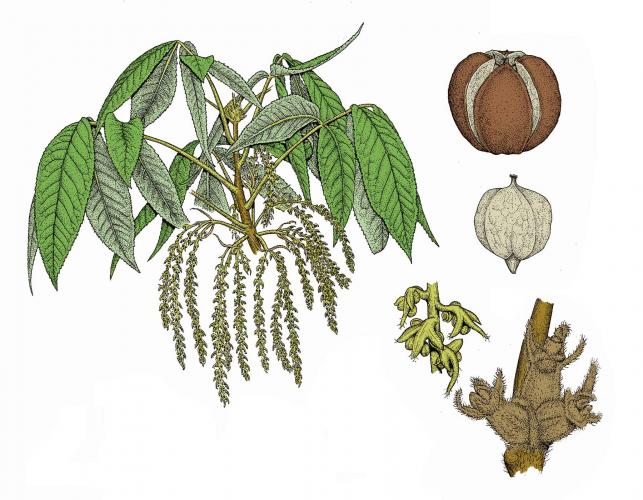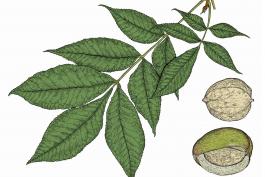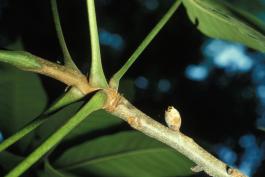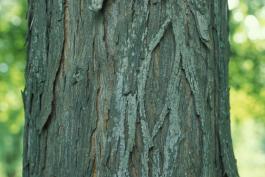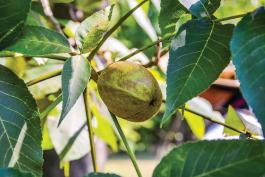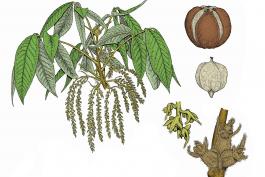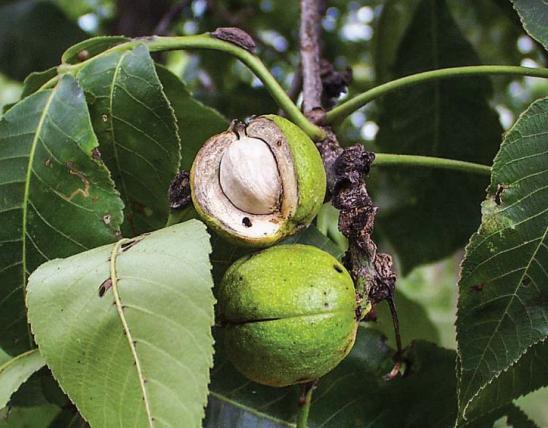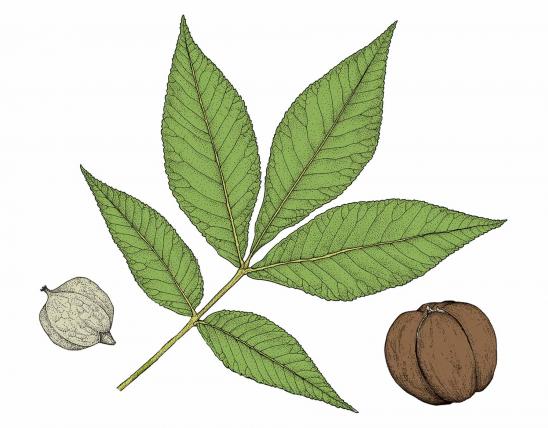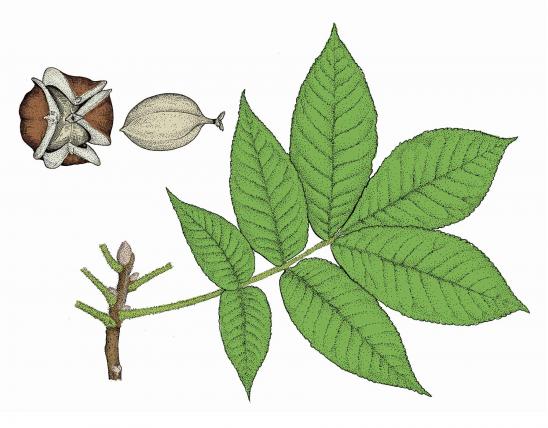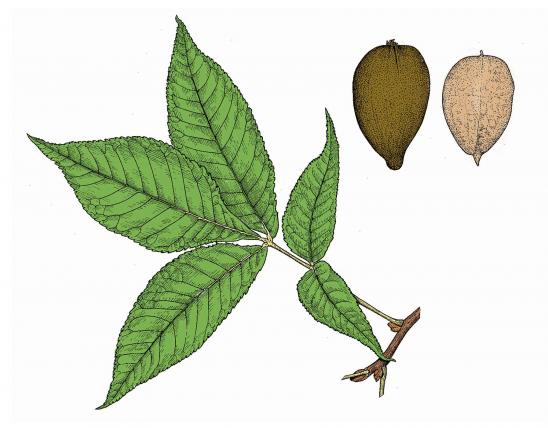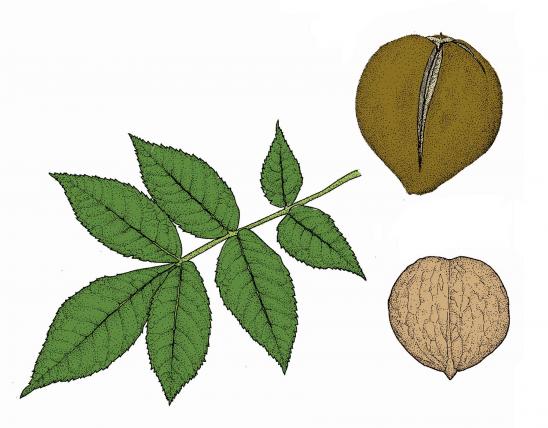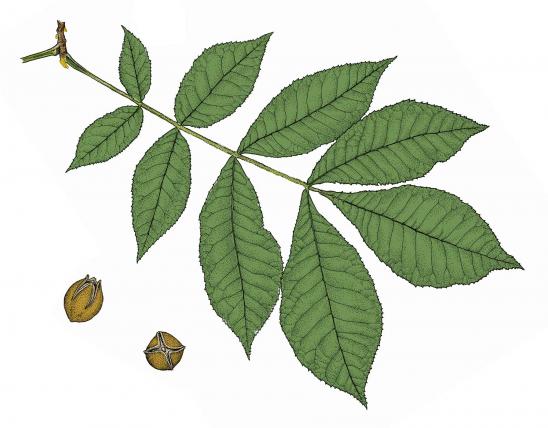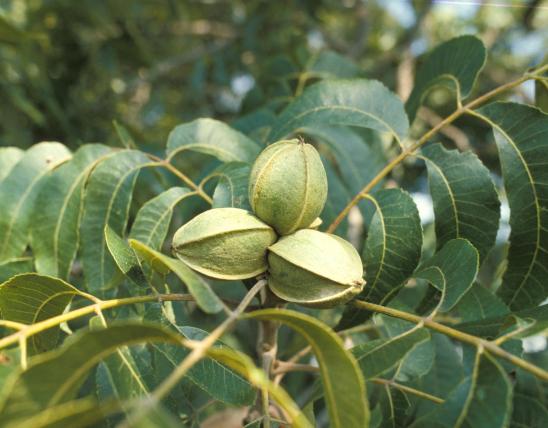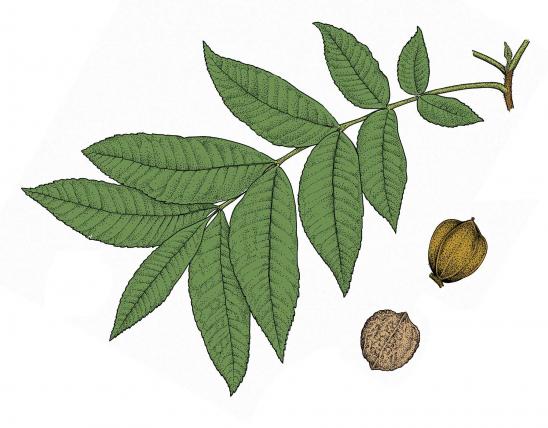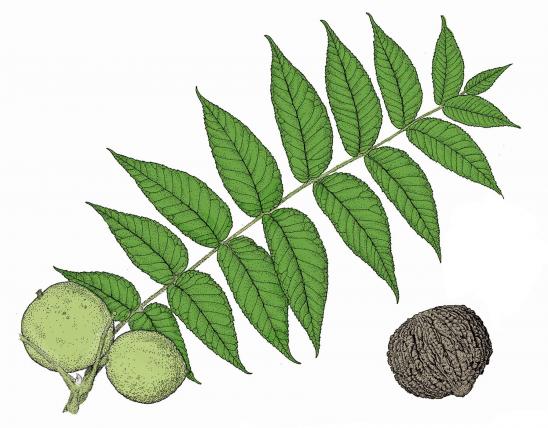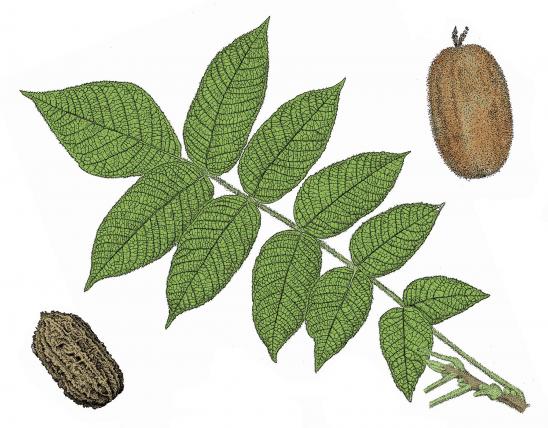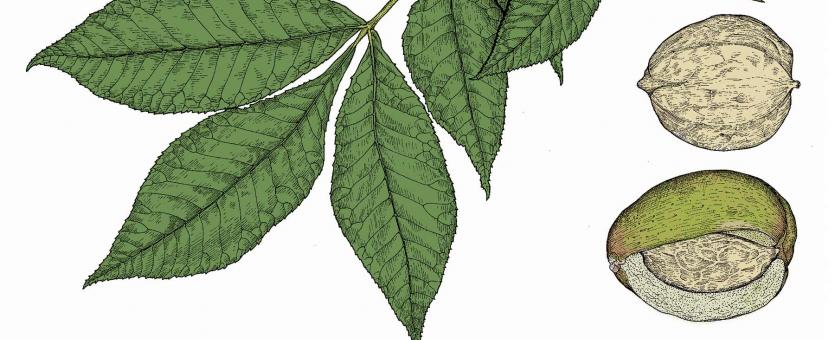
Shellbark hickory is a large tree with short, stout limbs, narrow crown, and shaggy bark.
Leaves are alternate, compound, 12–24 inches long, with 7 leaflets; each leaflet 5–9 inches long, oval, broadest above the middle, edges finely toothed, dark green.
Bark is similar to shagbark hickory: gray, separating into long, thin shaggy plates hanging loosely, with ends curving away from the trunk.
Twigs are stout, dark brown to reddish-orange; pores narrow.
Flowers April–May; male and female flowers separate on the same tree; male catkins in threes, female flowers 2–5, at the ends of branches.
Fruits September–October; nuts solitary or in clusters of 2 or 3, egg-shaped to nearly globe-shaped, depressed at the tip, 1–3 inches long; husk to ½ inch thick; light to dark brown, smooth to downy, hard, splitting easily along the 4 ribs at maturity.
Similar species: Compared to shagbark hickory, shellbark has larger leaves, more leaflets (5–9 instead of 3–5), larger nuts, and orange twigs.
Height: 90 feet (to 130 feet); spread: 50 feet. The largest of the true hickories.
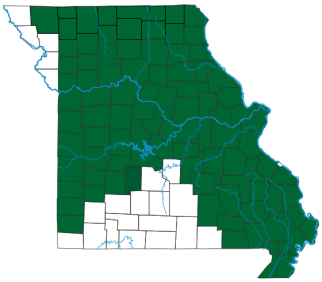
Scattered widely throughout the state but absent from much of the Ozark division.
Habitat and Conservation
Found in the fertile bottomland soils of valleys along streams and in river floodplains, usually in partial sun. This species is becoming scarce because the rich, deep river bottom soils it grows in have been cleared to grow crops. It is a slow-growing tree that makes an excellent shade tree in moist soil.
Human Connections
Shellbark hickory bears the best-tasting Missouri hickory nuts, and these rich, nutritious fruits were an important food for Native Americans. They and European settlers used the inner bark for cane crafts such as basketry. The wood is used for snowshoes, barrel hoops, ladders, and tool handles.
Ecosystem Connections
Gray squirrels and other mammals relish the nuts, whose high fat content provides the energy needed for overwintering. Trees provide cover, nesting sites, and dens for a variety of wildlife, ranging from birds and opossums to tiny, well-camouflaged jumping spiders.
